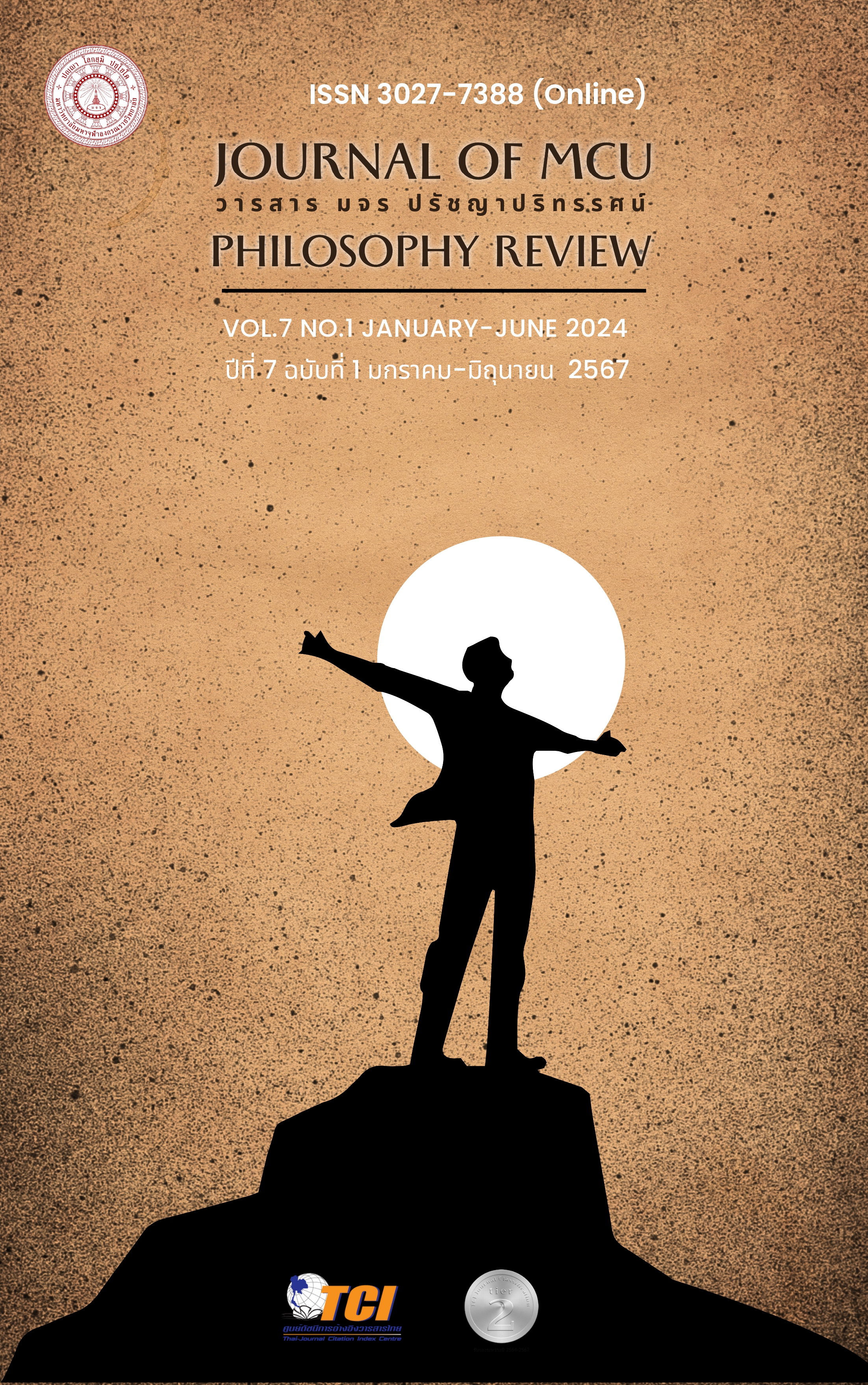Bhaya-bherava Sutta: Fear Management by Buddhist Methods
Main Article Content
Abstract
This academic article explains about fear management by Buddhist methods. Fear is the primary emotion of human being all ages. When human feels fear in something, he reacts in many ways. If there is abundant fear in one’s mind, it may be impact to his mind in bad way and will result in his daily life. There are many ways to manage scare. One of them is the method which Buddha recommended human in Bhaya-bherava Sutta. The results of the study were found that: Bhaya-bherava Sutta was the Sutta in Majjhima-Nikaya Mulapannasaka which Buddha explained the 16 causes of fear and he also described the 16 causes of fearlessness, those were the opposite of the causes of fear. In addition, Buddha said that since he was not yet enlightened; if he had felt fear in any posture, he had continued to remain in that posture until the fear was eliminated. To accomplish great deeds with mindfulness, Buddha’s mind was concentrated, up to the point that he attained the four jhanas and the three vijjas respectively. The one who pursues this model as a guideline for living with good quality of daily life, he can reduce or get rid of fear appropriately. If he carries on life according to this guideline, he can develop his mind up to the 4 jhanas and he will finally attain the 3 vijjas. Ultimately, his mind will be liberated from all defilements which is called nibbana or absolutely end of suffering or dukkha.
Article Details

This work is licensed under a Creative Commons Attribution-NonCommercial-NoDerivatives 4.0 International License.
บทความที่ได้รับการตีพิมพ์เป็นลิขสิทธิ์ของวารสาร มจร ปรัชญาปริทรรศน์
ข้อความในบทความที่ได้รับการตีพิมพ์ในวารสาร ถือเป็นความรับผิดชอบของผู้เขียนบทความ และข้อคิดเห็นนั้นไม่ถือว่าเป็นทัศนะและความรับผิดชอบของกองบรรณาธิการวารสาร มจร ปรัชญาปริทรรศน์
References
มหาจุฬาลงกรณราชวิทยาลัย. (2539). พระไตรปิฎกภาษาไทย ฉบับมหาจุฬาลงกรณราชวิทยาลัย. กรุงเทพมหานคร: โรงพิมพ์มหาจุฬาลงกรณราชวิทยาลัย.
มหาจุฬาลงกรณราชวิทยาลัย. (2556). อรรถกถาภาษาไทย ฉบับมหาจุฬาลงกรณราชวิทยาลัย. กรุงเทพมหานคร: โรงพิมพ์มหาจุฬาลงกรณราชวิทยาลัย.
นโปเลียน ฮิลล์. (2557). ปรัชญาชีวิต ศาสตร์แห่งความสำเร็จ (Laws of Success). แปลโดย ปสงค์อาสา. พิมพ์ครั้งที่ 11. กรุงเทพมหานคร: บริษัท เดอะเกรทไฟน์อาร์ต จำกัด.
ติช นัท ฮันห์. (2561). กลัว (FEAR) หัวใจของปัญญาญาณเพื่อผ่านพ้นพายุ. แปลโดย นายแพทย์ชวโรจน์ เกียรติกำพล. พิมพ์ครั้งที่ 5. กรุงเทพมหานคร: บริษัท ฟรีมายด์ พับลิชชิ่ง จำกัด.
พร รัตนสุวรรณ. (2537). อำนาจจิต. พิมพ์ครั้งที่ 3. กรุงเทพมหานคร: โรงพิมพ์วิญญาณ.
พระพรหมคุณาภรณ์ (ป.อ.ปยุตฺโต). (2558). พจนานุกรมพุทธศาสน์ ฉบับประมวลศัพท์. พิมพ์ครั้งที่ 23. กรุงเทพมหานคร: สำนักพิมพ์ผลิธัมม์ ในเครือบริษัท สำนักพิมพ์เพ็ทแอนด์โฮม จำกัด.
พระพรหมคุณาภรณ์ (ป.อ.ปยุตฺโต). (2558). พุทธธรรม ฉบับปรับขยาย. พิมพ์ครั้งที่ 41. กรุงเทพมหานคร: สำนักพิมพ์ผลิธัมม์ ในเครือ บริษัท สำนักพิมพ์เพ็ทแอนด์โฮม จำกัด.
ราชบัณฑิตยสถาน. (2554). พจนานุกรมฉบับราชบัณฑิตยสถาน พ.ศ. 2554. พิมพ์ครั้งที่ 2. กรุงเทพมหานคร: บริษัท นานมีบุ๊คส์พับลิเคชั่นส์ จำกัด.
โรงพยาบาลพญาไท. (2566). 8 ฮอร์โมนสำคัญของร่างกายที่ต้องทำความรู้จักและรับมือให้เป็น. สืบค้นเมื่อวันที่ 28 ธันวาคม 2566. จาก https://www.phyathai.com/ th/article/25618_essential_ hormones_that_you_have_to handle_branchpyt2.
Bangkok Hospital. (2566). คุณกำลังเสพติดความเครียดหรือไม่. สืบค้นเมื่อวันที่ 29 ธันวาคม 2566, จาก https://www.bangkokhospital.com/content/adrenal-addict-vs-adrenal-fatigue.
Julia Layton. (2566). How Fear Works. สืบค้นเมื่อวันที่ 28 ธันวาคม 2566. จาก https:// www. oneworldconsulting.com/owc-articles-db-alt.php?id=153&d=en.


